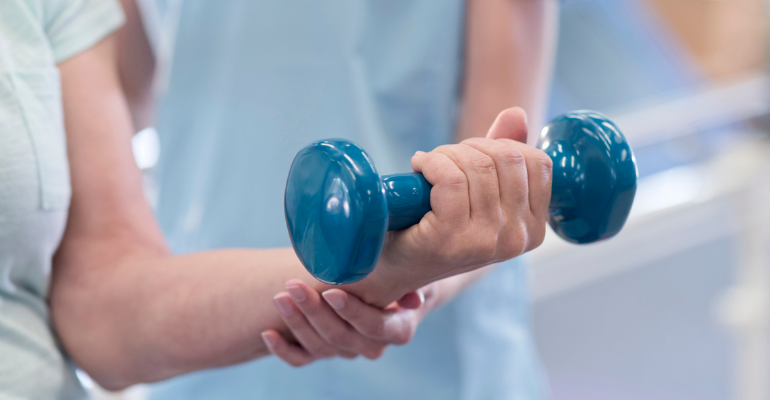Rehabilitation is becoming more widely recognised as a critical step in the recovery from a variety of ailments. As a result, a growing number of hospitals and healthcare organisations are providing rehabilitation services.
For healthcare providers, rehabilitation devices play a crucial role in facilitating and administering specialised treatments for patients. A wide variety of rehabilitation products used by physiotherapists, speech therapists, rehab nurses, occupational therapists, and other practitioners is growing in popularity, indicating that the market will expand. Biospace predicts that exercise and mobility, cognitive therapy equipment, test supplies, orthopedic soft goods, hot and cold therapy, heel and elbow support, cushions, and lymphedema products are expected to be some of the market's most important segments by category.
The global demand for rehabilitation equipment can be divided into home care facilities, hospitals, rehabilitation centers, clinics, and physiotherapy centers in terms of end users. Hospitals are projected to account for a significant share of the market.
Physiotherapy in ICUs
According to the findings from a study published in the Turkish Thoracic Journal, physical therapy in the intensive care unit (ICU) has many advantages, including improved quality of life, body functions, peripheral and respiratory muscle strength, and shortened hospital and ICU stays. Mobilisation, positioning, percussion, vibration, manual hyperventilation, suctioning, coughing, inspiratory muscle training, and bed and breathing exercises are some of the physiotherapy techniques used in the ICU. These treatments can be classified as chest physiotherapy and mobilisation.
According to the core standards for ICUs, physiotherapy should be accessible 24 hours a day, if required, depending on the patient's needs, and one physiotherapist per four beds is recommended to provide both respiratory management and rehabilitation care.
Positioning, active range of motion exercises, breathing exercises, passive range of motion exercises, percussion, mobilisation, vibration, and postural drainage were the most prevalent interventions in ICUs based in Turkey. In a study conducted in ICUs in Australia and New Zealand, vibration followed by manual lung hyperinflation, percussion, postural drainage/positioning, and mobilisation were identified as the most common secretion clearance techniques. A preliminary survey by Japanese Society of Education for Physicians and Trainees in Intensive Care, states that current rehabilitation procedures in Japanese ICUs include range of motion exercises, practicing sitting, and standing for patients on mechanical ventilation, as well as respiratory muscle conditioning and walking on rare occasions. Findings from the same study indicated that patients did not undergo electrical stimulation or used a cycle ergometer.
The primary obstacles to practicing physiotherapy in the ICU were a shortage of assistive equipment and a lack of priority to buy equipment/material. In order to practice proper physiotherapy in the ICU, assistive equipment like in-bed mobilisation bicycles, free weights/elastic bands, and walkers must be supplied.
Early ICU rehabilitation interventions may reduce physical and mental health complications, with potential benefits including improved muscle strength, physical function, and quality of life, as well as a reduction in healthcare costs and ICU stay.
Remote Care
The Remote Physiotherapy Market is expected to expand at a high CAGR from 2021 to 2026, according to a new market research report published by Global Market Estimates. Remote Physiotherapy is a technology-driven program that uses a virtual environment to include goods and services. These are computer-based programs that allow patients to virtually consult and interact with therapists or doctors. The impact of Covid-19 on people's lifestyles, have paved way for these systems have been widely adopted, and they have proven to be a popular platform for patients who need consultation.
In developed countries, these therapies are not a new occurrence. However, as a result of social distancing and lockdown incidents, remote physiotherapy has reached patients of all ages, interests, and locations.

